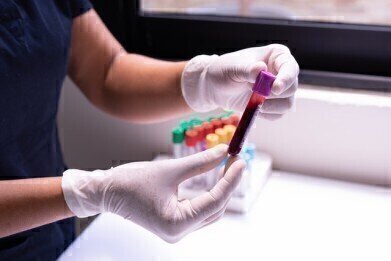Chromatography
What Are Nitrogen Generators Used For?
Jul 01 2022
Found in all proteins and living organisms, nitrogen is an essential chemical element. In laboratories, gaseous and liquid nitrogen is used for a wide range of applications across a myriad of industries. These include pharmaceutical research, healthcare, food analysis, chemicals and bio-tech.
Traditionally, nitrogen has been accessed via pressurised gas cylinders. However, over the past decade, an increasing number of laboratories have made the switch to nitrogen gas generators. Compact, reliable and efficient, these systems allow laboratory personnel to generate pure, lab-quality nitrogen in seconds.
Below, we take a look at some of the most common applications for nitrogen generators in laboratories.
Drug detection in clinical samples
On-site gas generators provide technicians with nitrogen needed to operate Liquid Chromatography-Mass Spectrometry (LC-MS) instruments. Used to separate and identify compounds, LC-MS is a powerful analytical technique suitable for both simple and complex samples. Typically, nitrogen is used to remove solvent in samples. This step heightens sensitivity and prevents inaccurate results.
Clinical research labs rely on LC-MS to analyse concentrations of vitamins, minerals and drugs in samples such as blood, plasma, urine and serum. Environmental scientists use LC-MS to assess the quality of drinking water and analyse other samples, including air, soil and sewage. Whatever the application, nitrogen generators provide LC-MS instruments with pure, high-quality gas.
Supporting embryonic growth
Nitrogen gas generators are must-have devices at In Vitro Fertilization (IVF) facilities. The gas is used to control the atmosphere of incubators and mimic the exact conditions of the female uterus. A stable environment supports embryonic growth and increases the chances of survival.
Drug research and development
Dry boxes are widely used at research institutes, medical facilities and laboratories where access to low-oxygen environments is essential. Also known as inert atmosphere glove boxes, these devices are designed to eliminate the risk of sample degradation, oxidation and other issues associated with exposure to oxygen and moisture. Nitrogen gas is used to positively pressurise dry boxes and remove atmospheric contaminants from the storage chamber.
At pharmaceutical research laboratories, scientists use dry boxes to create a low-humidity, containment-free environment to carry out drug development experiments. Dry boxes are also used to store active ingredients and ensure they don’t deteriorate. Cellular research laboratories use inert atmosphere glove boxes to store calibrated instruments, microscope lenses and other sensitive devices that could be damaged by oxygen and humidity exposure.
Want to know more about the different applications for laboratory generator systems? We answer all your questions in our complete guide, ‘Laboratory Generators - Everything You Need to Know’. Or check out 'Optimising Bioreactor Yields with Smart Sensors' for more on the latest laboratory developments.
Digital Edition
International Labmate 49.6 - Sept 2024
September 2024
Chromatography Articles - HPLC gradient validation using non-invasive flowmeters Mass Spectrometry & Spectroscopy Articles - From R&D to QC, making NMR accessible for everyone: Putting NMR...
View all digital editions
Events
Oct 30 2024 Birmingham, UK
Oct 30 2024 Manchester, UK
Nov 11 2024 Dusseldorf, Germany
Nov 12 2024 Cologne, Germany
Nov 12 2024 Tel Aviv, Israel



















